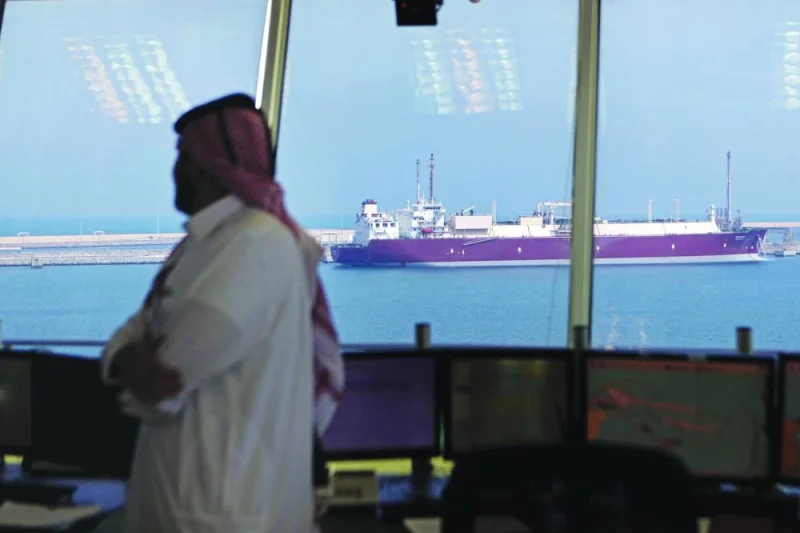Qatar’s LNG liquefaction plants achieved utilisation rates in excess of 100% in 2022, the International Gas Union (IGU) said in its ‘2023 World LNG Report’.
IGU noted that liquefaction plants in the Middle East ran at high utilisation rates over the year, with Qatar and UAE performing at 107% and 99% respectively.
Global operational liquefaction capacity totalled 478.4mn tonnes per year (MTPY) as of end-2022 with the utilisation rate averaging 89% of pro-rated capacity, a notable increase compared to 80.4% in 2021.
Global liquefaction plants have seen higher utilisation rates following the start of the Russia-Ukraine conflict at end-February 2022 with Europe increasing LNG imports to offset reduced piped gas flows from Russia.
At the same time, some export facilities have been running below average.
For example, IGU noted that a fire at the Freeport LNG export facility in the US took the liquefaction plant offline for several months from June 2022.
In Australia, a fire and employee strike at Prelude FLNG led to sporadic liquefaction production disruptions with similar issues or technical hurdles seen at NLNG in Nigeria, Snohvit LNG in Norway and MLNG in Malaysia.
As a result, operational liquefaction plants maximised LNG production to meet surging European LNG demand leading to a high price premium compared to other regions worldwide.
Despite outages and upstream supply disruptions, nine out of 22 LNG exporting markets achieved higher-than-average utilisation rates in 2022.
Besides Qatar and the UAE, these included Cameroon, Papua New Guinea, Russia, Oman, Equatorial Guinea, the US and Australia.
Liquefaction plants in the US were fully utilised in 2022 with a utilisation rate of 100% compared to 103% in 2021. This was despite Freeport LNG going offline in the second half of 2022, suggesting the loss of its export volumes was partially offset by increased supply from other operational liquefaction plants in the US.
This, IGU said, was also boosted by Calcasieu Pass LNG which added total capacity of 10 MTPY in February last year.
Liquefaction plants in other regions that did not operate above average utilisation rates in 2022 were constrained by feedgas supplies from linked upstream fields, unexpected maintenance, or industrial action, which limited liquefaction production levels through the year, IGU said.
In Africa, utilisation at the Nigeria LNG (NLNG) liquefaction plant averaged 67% in 2022, after averaging 72% in the first half of 2022 and 61% in the second half of 2022.
The reduced overall rate was caused by significant flooding across its upstream gas supplies’ production regions, which required several gas production wells to be shut.
NLNG has experienced multiple outages since August 2022 and declared force majeure from October 2022 to end-November 2022.
In Australia, the 3.7 MTPY Darwin LNG (DLNG) operated by Santos experienced issues with feedgas supply from the Bayu-Undan gas field.
Gas production from the Bayu-Undan gas field is estimated to cease at end-2023 with the operator considering backfilling options to support future LNG production once Bayu-Undan has been fully depleted.
Santos had decided to proceed with the $311mn Darwin pipeline duplication project to enable gas from its offshore Barossa field to flow to DLNG with the first gas expected in H1,2025.
Offshore Australia, Prelude FLNG (3.6 MTPY) performed far below capacity last year with its utilisation rate averaging just 32%.
It followed a four-month maintenance period from December 2021 to early April 2022 after a fire. Production was halted again due to industrial action which lasted from June to late August 2022. Another fire-related shut-down occurred in December 2022 following a 46-day maintenance period, causing Prelude’s production to remain muted, IGU noted.

A view of the Ras Laffan Industrial City, Qatar's principal site for the production of liquefied natural gas and gas-to-liquids (file). IGU noted that liquefaction plants in the Middle East ran at high utilisation rates over the year, with Qatar and UAE performing at 107% and 99% respectively.


